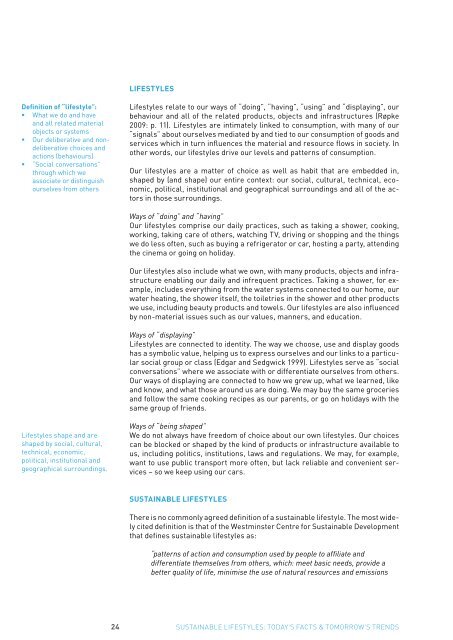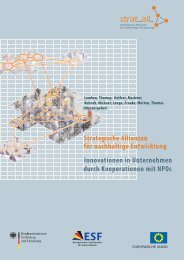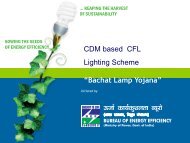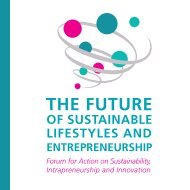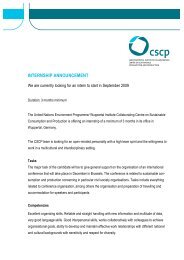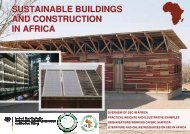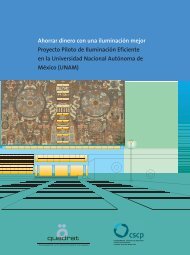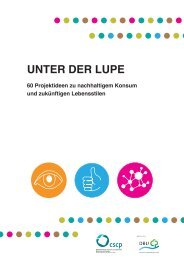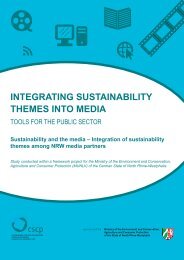today's facts & tomorrow's trends - SPREAD Sustainable Lifestyles ...
today's facts & tomorrow's trends - SPREAD Sustainable Lifestyles ...
today's facts & tomorrow's trends - SPREAD Sustainable Lifestyles ...
Create successful ePaper yourself
Turn your PDF publications into a flip-book with our unique Google optimized e-Paper software.
<strong>Lifestyles</strong><br />
Definition of “lifestyle”:<br />
• What we do and have<br />
and all related material<br />
objects or systems<br />
• Our deliberative and nondeliberative<br />
choices and<br />
actions (behaviours)<br />
• “Social conversations”<br />
through which we<br />
associate or distinguish<br />
ourselves from others<br />
<strong>Lifestyles</strong> relate to our ways of “doing”, “having”, “using” and “displaying”, our<br />
behaviour and all of the related products, objects and infrastructures (Røpke<br />
2009: p. 11). <strong>Lifestyles</strong> are intimately linked to consumption, with many of our<br />
“signals” about ourselves mediated by and tied to our consumption of goods and<br />
services which in turn influences the material and resource flows in society. In<br />
other words, our lifestyles drive our levels and patterns of consumption.<br />
Our lifestyles are a matter of choice as well as habit that are embedded in,<br />
shaped by (and shape) our entire context: our social, cultural, technical, economic,<br />
political, institutional and geographical surroundings and all of the actors<br />
in those surroundings.<br />
Ways of “doing” and “having”<br />
Our lifestyles comprise our daily practices, such as taking a shower, cooking,<br />
working, taking care of others, watching TV, driving or shopping and the things<br />
we do less often, such as buying a refrigerator or car, hosting a party, attending<br />
the cinema or going on holiday.<br />
Our lifestyles also include what we own, with many products, objects and infrastructure<br />
enabling our daily and infrequent practices. Taking a shower, for example,<br />
includes everything from the water systems connected to our home, our<br />
water heating, the shower itself, the toiletries in the shower and other products<br />
we use, including beauty products and towels. Our lifestyles are also influenced<br />
by non-material issues such as our values, manners, and education.<br />
Ways of “displaying”<br />
<strong>Lifestyles</strong> are connected to identity. The way we choose, use and display goods<br />
has a symbolic value, helping us to express ourselves and our links to a particular<br />
social group or class (Edgar and Sedgwick 1999). <strong>Lifestyles</strong> serve as “social<br />
conversations” where we associate with or differentiate ourselves from others.<br />
Our ways of displaying are connected to how we grew up, what we learned, like<br />
and know, and what those around us are doing. We may buy the same groceries<br />
and follow the same cooking recipes as our parents, or go on holidays with the<br />
same group of friends.<br />
<strong>Lifestyles</strong> shape and are<br />
shaped by social, cultural,<br />
technical, economic,<br />
political, institutional and<br />
geographical surroundings.<br />
Ways of “being shaped”<br />
We do not always have freedom of choice about our own lifestyles. Our choices<br />
can be blocked or shaped by the kind of products or infrastructure available to<br />
us, including politics, institutions, laws and regulations. We may, for example,<br />
want to use public transport more often, but lack reliable and convenient services<br />
– so we keep using our cars.<br />
<strong>Sustainable</strong> lifestyles<br />
There is no commonly agreed definition of a sustainable lifestyle. The most widely<br />
cited definition is that of the Westminster Centre for <strong>Sustainable</strong> Development<br />
that defines sustainable lifestyles as:<br />
“patterns of action and consumption used by people to affiliate and<br />
differentiate themselves from others, which: meet basic needs, provide a<br />
better quality of life, minimise the use of natural resources and emissions<br />
24<br />
SUSTAINABLE LIFESTYLES: TODAY’S FACTS & TOMORROW’S TRENDS


